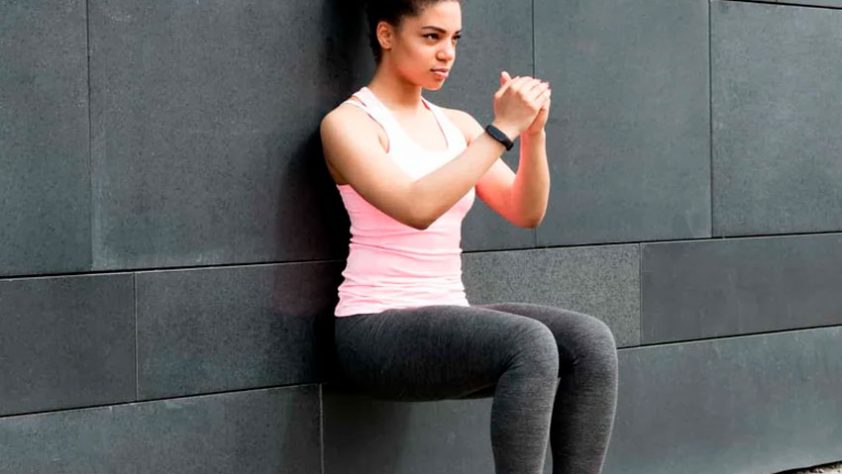A plank in motion or a dynamic plank helps to work not only the transverse and rectus abdominis muscles, but also more include the shoulders and core. There are several dynamic bars – there are also jumps for those who need to burn more calories, and with raising their legs on the buttocks to pump this problem area. In fitness, dynamic planks are often used, and they are also used in the training of athletes as one of the best exercises for strengthening the core in dynamics. Plus, doing the dynamic bar in interval style or Tabata mode will burn a lot of extra calories and lose weight faster.
The benefits and disadvantages of exercise
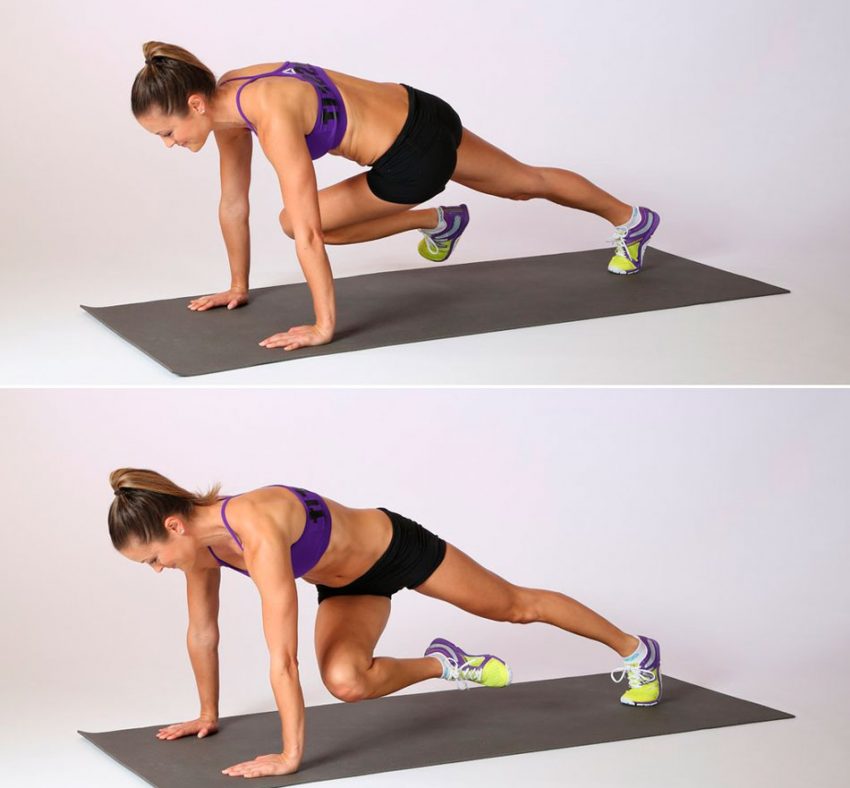
The pros are obvious:
- Exercise strengthens the core, and exactly as it is necessary for athletics – in dynamics;
- The plank helps not only to “draw in” the stomach, but also to strengthen the muscles of the legs and arms, which has a positive effect on the figure;
- The exercise improves posture and forms the correct starting position for all strength format movements;
- The bar teaches you to draw in your stomach under load, which is the prevention of injuries in strength exercises;
- Movement saves training time, as it involves a lot of muscles at once, and the athlete can work out the whole body with him qualitatively;
- The Dynamic Plank can be considered an analogue of specialized mobility exercises for ligaments and joints, it allows you to improve mobility for squatting, deadlift, running and bench and standing presses, as it works on all key joints.
Disadvantages:
- The main disadvantage of the dynamic bar is the increased shock load on the hands and shoulders, which overloads the ligaments and joints, and can cause inflammation and injuries in people with great excess weight and improperly aligned movement patterns. Therefore, the statement “the plank is a good exercise for beginners” is true only if these beginners know how to move and control their body;
- Jumping plank variations can aggravate the condition of the knees, hips, ankles, shoulders, and hands if they are problematic. It is worth avoiding the dynamic bar in case of violations of the ODA;
- Hernias and protrusions of the spinal column can be aggravated if the athlete performs many dynamic planks, which are accompanied by displacement, twisting and rapid change of planes during work;
- For many people, careless exercise technique can cause injury, and almost everyone breaks down in a multi-rep mode.
Execution technique
“Spider” or bringing the knees to the elbows in the plank while standing
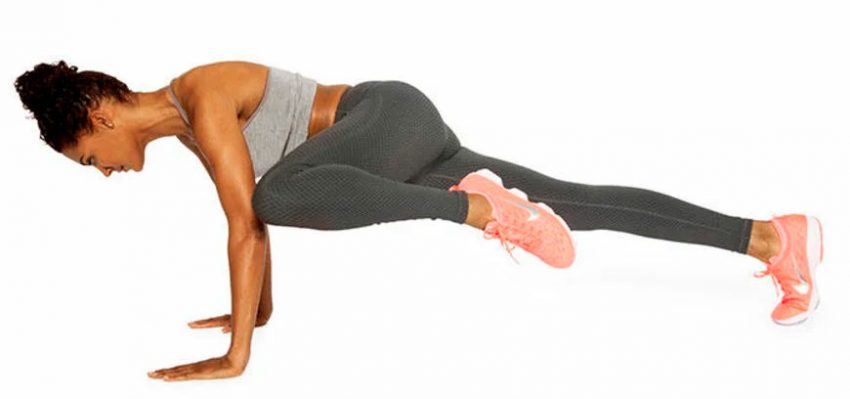
The technique is
- Stand up straight with your palms on the floor, shoulder-width apart. Step back with your feet, take a plank pose;
- Feet hip-width apart, distribute the weight between palms and toes;
- Without changing the position of the shoulder girdle, alternately tear off the leg from the floor, bend it at the knee, and bring the knee to the elbow through the side;
- The movement follows an arcuate trajectory, the knee is brought to the elbow and the legs return back to their original position;
- Alternate your legs as if you were walking throughout the approach.
Jump to the shoulders in the plank
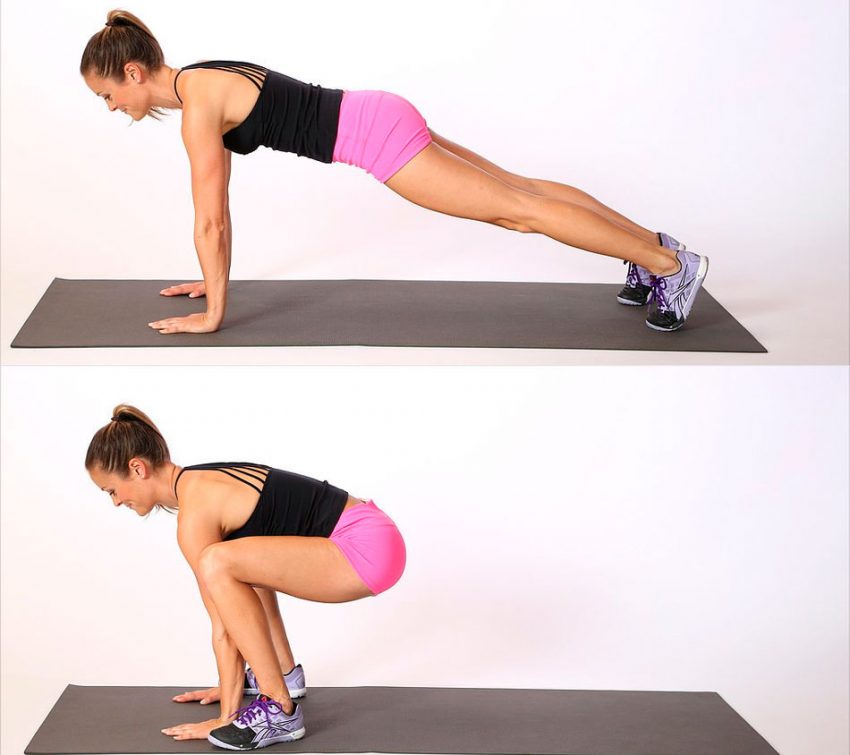
This exercise is a special preparatory movement for practicing burpees:
- Stand in an emphasis lying, that is, in a plank position on the palms and toes;
- Let the socks be hip-width apart; legs are parallel to each other;
- Jump to bring the socks to the shoulders;
- Try not to lift your palms off the floor;
Jump either on both sides of the arms to the outside or to the center; - Repeat the required number of times;
- Try not to move your arms.
T-pose or pelvic lift with support on the forearm
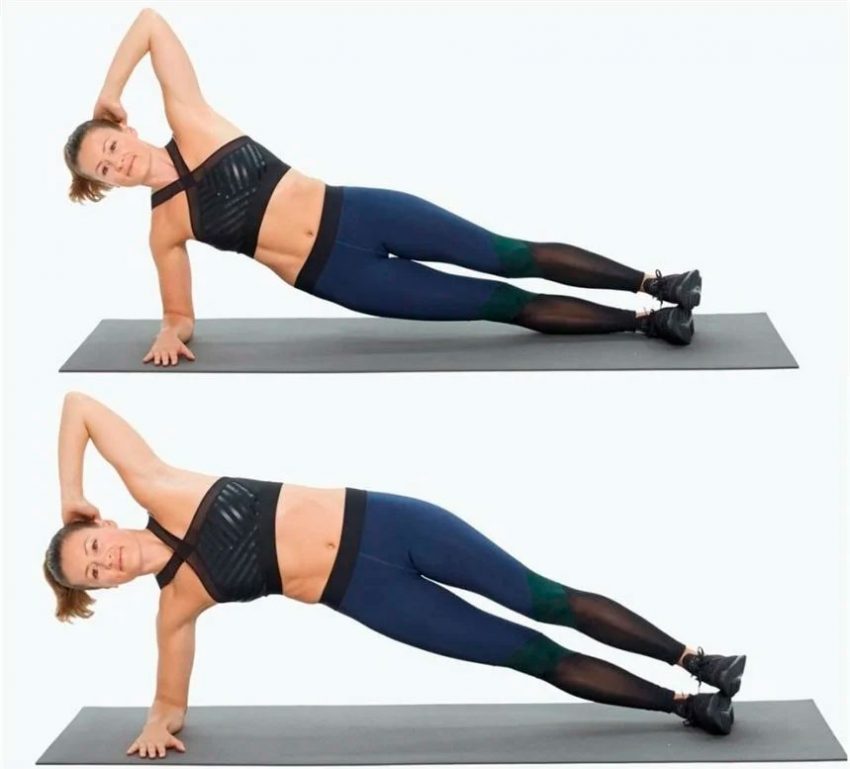
This variation is intended for an accentuated study of the oblique and bark:
- Stand in the usual plank on the forearm and toe;
- Straighten, then transfer your body weight to one forearm and the same leg;
- Take a T-pose, extend your free arm up;
- Work, lowering the hip to the floor, and rising again into the T-pose, repeat the required number of times;
- Repeat on the other side, you can stand in the plank for 1-2 minutes before moving to the second side.
Back leg plank

This is a variation of the exercise with an emphasis on the buttocks:
- take emphasis on the forearms and toes;
- straighten, pull your stomach inward;
- take your straight right leg up, straining your buttocks;
- lower your leg to its original position, repeat from the second;
- work, alternately lifting your legs from the plank position.
Elbow plank

- Stand on your palms and socks;
- Bend your arms alternately at the elbow joint, and lower them to the floor in such a way as to go into focus on the forearms and toes;
- Repeat the exit to the starting position in the same way one by one.
Plank with an arm and leg rise
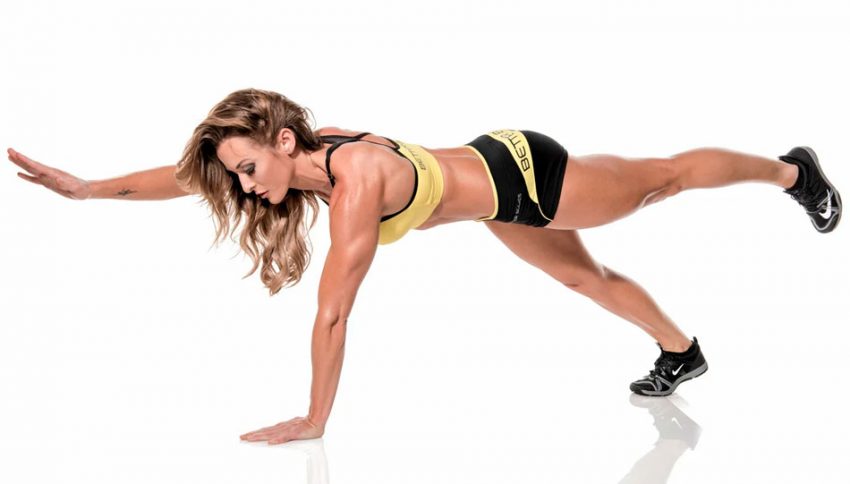
- It is considered the most difficult option, first take the usual emphasis on the bar on the socks and palms;
- Then tighten the abs, stabilize the body, and free the opposite arm and leg;
- Pull them out in different directions, and leave them in this position;
- Hold for 3 seconds, return to starting position, and repeat in the opposite direction.



